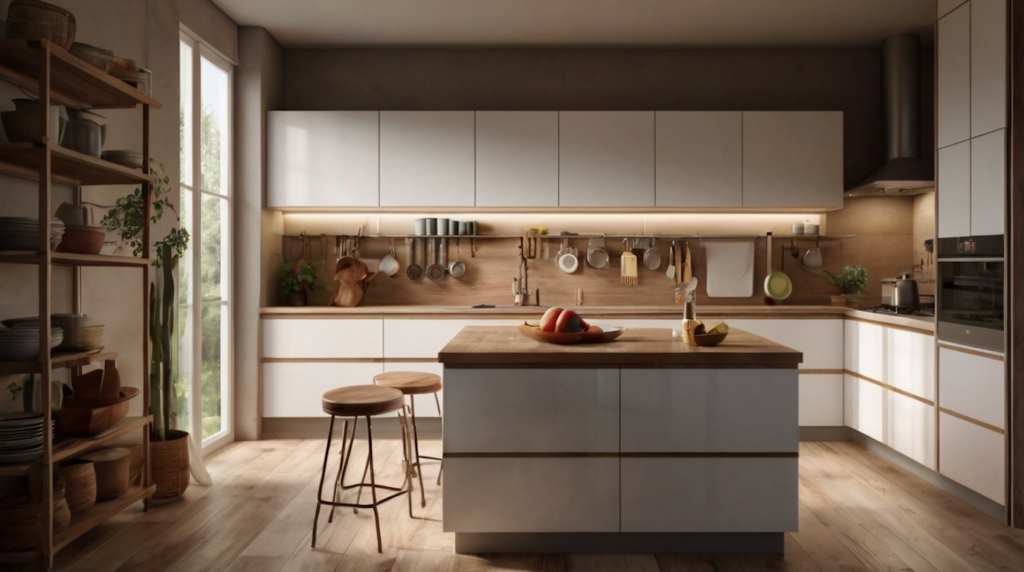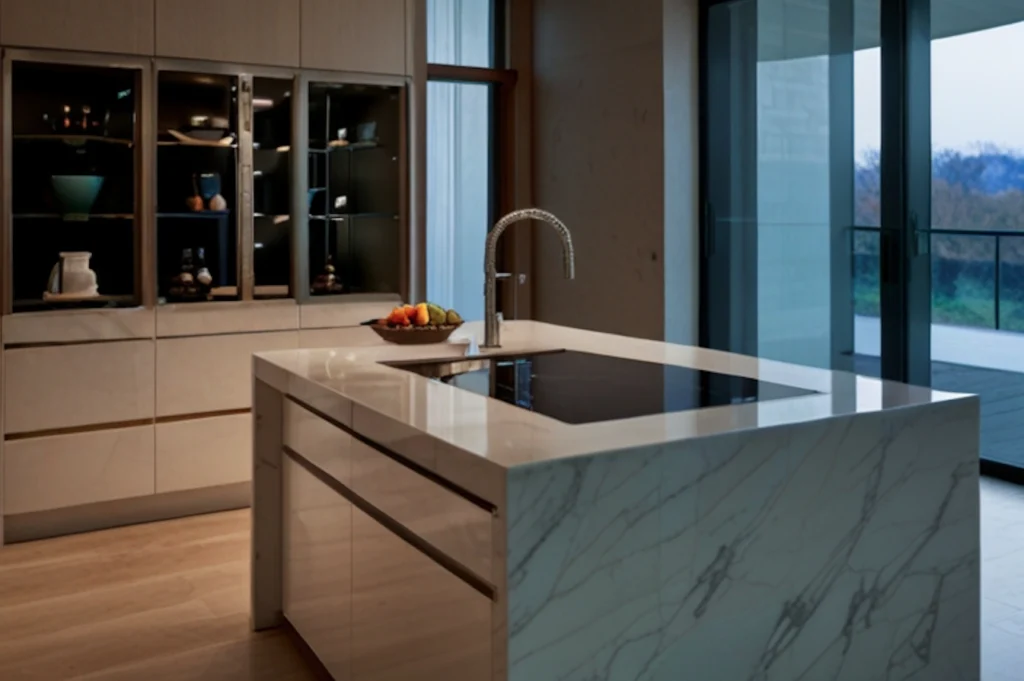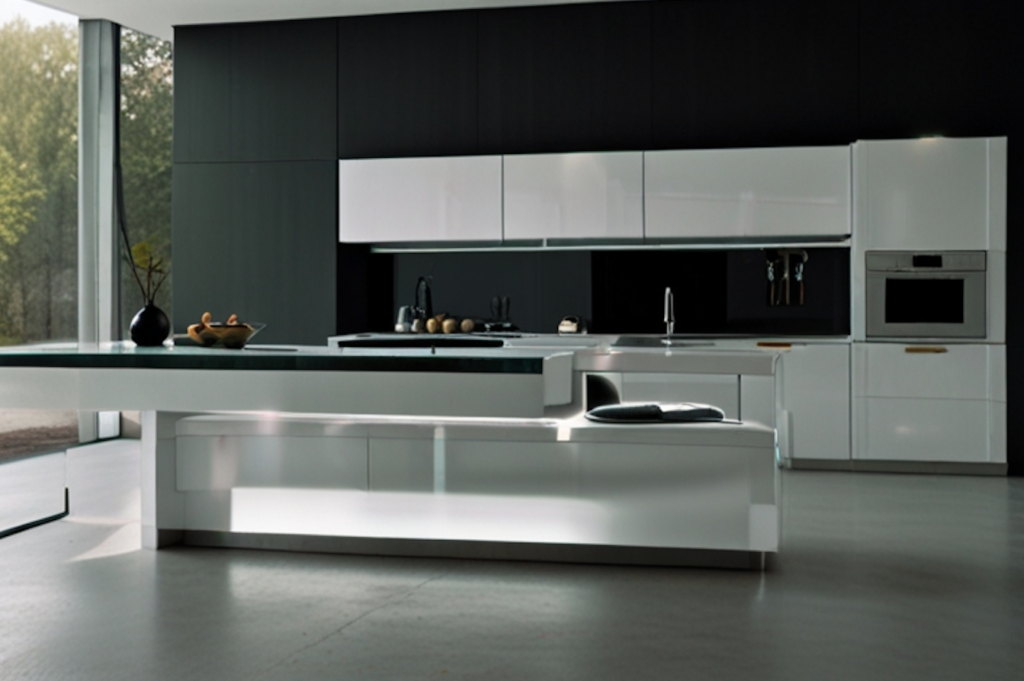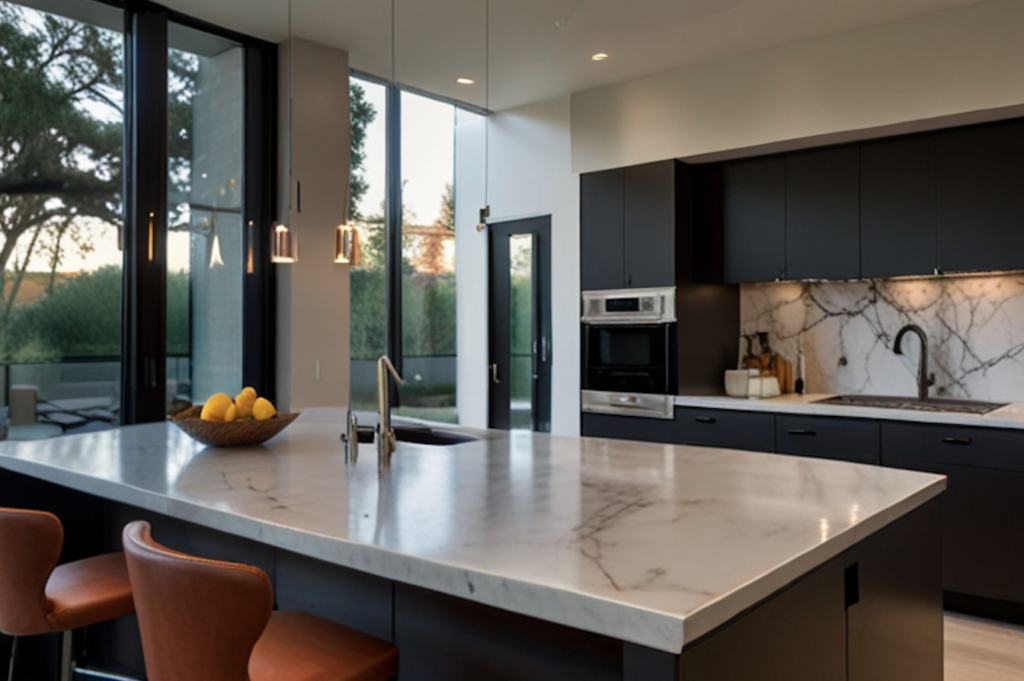As kitchen remodelers, we’re in the business of creating spaces that not only look good but also function seamlessly. Today, we’re diving into the world of kitchen ergonomics, a critical aspect often overlooked in the pursuit of aesthetics. It’s time to design kitchens that are not just beautiful, but also a joy to work in.
Understanding the Importance of Ergonomics
Think about your own kitchen. Do you find yourself bending, reaching, or straining while preparing meals? These repetitive motions can lead to discomfort and even injuries. That’s where ergonomics comes in. It’s about designing spaces that fit the people who use them, promoting efficiency, comfort, and safety.
The Kitchen Work Triangle Revisited: An Ergonomic Perspective
We’ve all heard about the kitchen work triangle – the efficient path between the sink, stove, and refrigerator. But let’s revisit this concept from an ergonomic standpoint. It’s not just about the distances between these points, but also about the comfort and accessibility of each zone.
- Proper Work Heights: Countertop height should be approximately 6 inches below your elbow height when standing. This allows for a comfortable and efficient working position, reducing strain on your back and shoulders.
- Zone Organization: Group similar tasks together. Place frequently used items within easy reach, eliminating unnecessary bending and stretching.

Beyond the Work Triangle: Optimizing Kitchen Ergonomics
While the kitchen work triangle is a foundational concept, there’s more to ergonomic design than just the placement of key appliances. Let’s delve deeper into specific elements that contribute to a comfortable and efficient kitchen.
Seating and Storage: A Perfect Pair
- Seating Solutions: Ergonomics isn’t just about standing; it’s about providing options. Consider incorporating seating areas within the kitchen. A breakfast nook or bar stools at the island allow for rest and relaxation while still being part of the kitchen action.
- Smart Storage: It’s not just about having storage; it’s about accessible storage. Implement pull-out shelves and lazy Susans to eliminate the need for excessive bending and reaching. Consider lowered cabinets for those with mobility limitations.
Accessibility for All: Designing for Inclusion
- Universal Design Principles: While we’re discussing ergonomics, let’s not forget accessibility. Design kitchens that are inclusive for people of all ages and abilities. Lowered countertops, grab bars, and non-slip flooring are just a few examples of universal design elements that can benefit everyone.
- Anti-Fatigue Mats: Reduce strain on feet and legs with anti-fatigue mats. These provide cushioning and support, helping to prevent fatigue and discomfort during long periods of standing.
Lighting and Appliance Placement: The Finishing Touches
We’ve covered the importance of work zones, storage, and seating in creating an ergonomic kitchen. Now let’s focus on the details that truly elevate comfort and efficiency: lighting and appliance placement.
Lighting: More Than Just a Bulb
Proper lighting is crucial for reducing eye strain and fatigue. It also enhances safety and productivity. Consider these lighting elements:

- Task Lighting: This is essential for work zones like the sink, stove, and prep areas. Under-cabinet lighting is a must, but consider additional lighting for specific tasks, like a pot filler light or lighting for a dedicated baking area.
- Ambient Lighting: Overall lighting creates a welcoming atmosphere. Recessed lighting or pendant lights can provide general illumination.
- Natural Light: Maximize natural light by strategically placing windows. Consider adding skylights or light tubes for kitchens with limited natural light.
Appliance Placement: Form and Function
Where you place your appliances can significantly impact workflow and comfort. Consider these tips:
- Island Placement: If you have a kitchen island, consider placing the sink on it. This centralizes a key function and reduces steps.
- Refrigerator Location: Place the refrigerator near the entry point to the kitchen for easy access.
- Dishwasher and Sink Proximity: Position the dishwasher near the sink to minimize steps when unloading and loading.
By carefully considering lighting and appliance placement, you can create a kitchen that is not only functional but also a pleasure to work in.
The Finishing Touches: Ergonomics for Everyone
We’ve covered the fundamentals of kitchen ergonomics, but there’s more to consider for a truly comfortable and efficient space. Let’s dive into the details that can make a significant difference.
Beyond the Basics: Enhancing Comfort and Accessibility
- Seating Solutions: We’ve touched on the importance of seating, but let’s explore it further. Consider adjustable height stools for accommodating people of different heights. For those with mobility challenges, built-in seating with adequate legroom can be a game-changer.
- Storage Accessibility: It’s not just about reaching items; it’s about easy retrieval. Implement pull-out shelves and lazy Susans in both upper and lower cabinets. Consider soft-close drawers and doors to prevent slamming and potential injuries.
- Lighting for Every Task: We’ve discussed task lighting, but let’s expand. Consider under-cabinet lighting with adjustable brightness for flexibility. For those with visual impairments, high-contrast colors and clear labeling can be beneficial.
- Universal Design Principles: Create a kitchen that works for everyone. Wide doorways, non-slip flooring, and clear pathways are essential for accessibility. Consider lever-style handles for cabinets and faucets, which can be easier to use for people with limited hand strength.
By incorporating these additional ergonomic elements, we can create kitchens that are not only efficient but also inclusive and comfortable for all users.




